
Complexity: A Guided Tour
by
Melanie Mitchell
Published 31 Mar 2009
So Brown and Enquist went in search of a “math buddy”—a mathematician or theoretical physicist who could help them out with this problem but not simplify it so much that the biology would get lost in the process. Left to right: Geoffrey West, Brian Enquist, and James Brown. (Photograph copyright © by Santa Fe Institute. Reprinted with permission.) FIGURE 17.3. Illustration of bronchi, branching structures in the lungs. (Illustration by Patrick Lynch, licensed under Creative Commons [http://creativecommons.org/licenses/by/3.0/].) Enter Geoffrey West, who fit the bill perfectly. West, a theoretical physicist then working at Los Alamos National Laboratory, had the ideal mathematical skills to address the scaling problem.
…
Not only had he already worked on the topic of scaling, albeit in the domain of quantum physics, but he himself had been mulling over the biological scaling problem as well, without knowing very much about biology. Brown and Enquist encountered West at the Santa Fe Institute in the mid-1990s, and the three began to meet weekly at the institute to forge a collaboration. I remember seeing them there once a week, in a glass-walled conference room, talking intently while someone (usually Geoffrey) was scrawling reams of complex equations on the white board. (Brian Enquist later described the group’s math results as “pyrotechnics.”) I knew only vaguely what they were up to. But later, when I first heard Geoffrey West give a lecture on their theory, I was awed by its elegance and scope.
…
Their goal was to plot out the founding of a new research institute that would “pursue research on a large number of highly complex and interactive systems which can be properly studied only in an interdisciplinary environment” and “promote a unity of knowledge and a recognition of shared responsibility that will stand in sharp contrast to the present growing polarization of intellectual cultures.” Thus the Santa Fe Institute was created as a center for the study of complex systems. In 1984 I had not yet heard the term complex systems, though these kinds of ideas were already in my head. I was a first-year graduate student in Computer Science at the University of Michigan, where I had come to study artificial intelligence; that is, how to make computers think like people.

Scale: The Universal Laws of Growth, Innovation, Sustainability, and the Pace of Life in Organisms, Cities, Economies, and Companies
by
Geoffrey West
Published 15 May 2017
Like all grand syntheses, these will almost certainly remain incomplete, and very likely unattainable, but they will nevertheless inspire significant, possibly revolutionary new ideas, concepts, and techniques with implications for how we move forward and whether what we have thus far achieved can survive. 2. TRANSDISCIPLINARITY, COMPLEX SYSTEMS, AND THE SANTA FE INSTITUTE Although such a vision may not be explicitly articulated in such grandiose terms, it does encapsulate what the Santa Fe Institute was founded to address. It’s a remarkable place. Maybe not everybody’s cup of tea, but for many of us who still harbor a naive, possibly romantic image of wanting to be part of an eclectic community of scholars searching for “truth and beauty”—and having been disappointed that we didn’t find it in a classic university setting—SFI comes the nearest we’re likely to get to realizing it.
…
• The Myth of Open-Ended Growth • The Surprising Simplicity of Company Mortality • Requiescant in Pace • Why Companies Die, but Cities Don’t 10. THE VISION OF A GRAND UNIFIED THEORY OF SUSTAINABILITY Accelerating Treadmills, Cycles of Innovation, and Finite Time Singularities Afterword Science for the Twenty-first Century • Transdisciplinarity, Complex Systems, and the Santa Fe Institute • Big Data: Paradigm 4.0 or Just 3.1? Postscript and Acknowledgments Notes Index List of Illustrations About the Author 1 THE BIG PICTURE 1. INTRODUCTION, OVERVIEW, AND SUMMARY Life is probably the most complex and diverse phenomenon in the universe, manifesting an extraordinary variety of forms, functions, and behaviors over an enormous range of scales.
…
Above all, I want to use these examples to convey the conceptual power of thinking quantitatively in terms of scale. 1. FROM GODZILLA TO GALILEO From time to time, like many scientists I receive requests from journalists asking for an interview, usually about some question or problem related to cities, urbanization, the environment, sustainability, complexity, the Santa Fe Institute, or occasionally even about the Higgs particle. Imagine my surprise, then, when I was contacted by a journalist from the magazine Popular Mechanics informing me that Hollywood was going to release a new blockbuster version of the classic Japanese film Godzilla and that she was interested in getting my views on it.
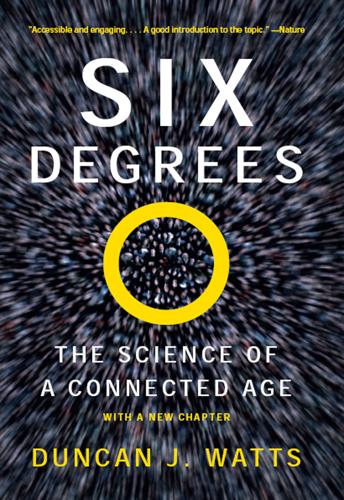
Six Degrees: The Science of a Connected Age
by
Duncan J. Watts
Published 1 Feb 2003
After listening to me for a while, he mentioned that his friend Peter would be really interested in this stuff, and that he had come to MIT to work with this guy—Steve somebody—who had jumped ship to Cornell. “That’s my adviser,” I said, and there it rested again, until over two years later, at the Santa Fe Institute. One day my office mate, Geoffrey West, a distinguished physicist and expatriate Brit, mentioned that he was inviting “one of your fellow countrymen” from MIT to recruit him for a postdoc position. “Oh,” I said, “let me guess…his name’s Peter, right?” Sure enough. And that’s when I finally met Peter. He didn’t take the job, however, preferring to stay on at MIT to work with his Ph.D. adviser, Dan Rothman (who, you will not be surprised to learn, was a friend of Steve’s).
…
At a more general level, I am deeply grateful to a number of people at Columbia University—Peter Bearman, Mike Crowe, Chris Scholz, and David Stark—as well as Murray Gell-Mann, Ellen Goldberg, and Erica Jen at the Santa Fe Institute and Andrew Lo at MIT for giving me the freedom and support to pursue my selfish interests, even sometimes at questionable benefit to their own. The National Science Foundation (under grant 0094162), Intel Corporation, the Santa Fe Institute, and the Columbia Earth Institute have provided critical financial support to my teaching and research, as well as to a series of seminal workshops in Santa Fe and New York, out of which numerous collaborations and projects have sprung.
…
Critical Phenomena in Natural Sciences (Springer, Berlin, 2000). A detailed discussion of spin systems and phase transitions is given in Palmer, R. Broken ergodicity. In Stein, D. L. (ed.), Lectures in the Sciences of Complexity, vol. I, Santa Fe Institute Studies in the Sciences of Complexity (Addison-Wesley, Reading, MA, 1989), pp. 275–300. Stein, D. L. Disordered systems: Mostly spin systems. In Stein, D. L. (ed.), Lectures in the Sciences of Complexity, vol. I, Santa Fe Institute Studies in the Sciences of Complexity (Addison-Wesley, Reading, MA, 1989), pp. 301–354. If one actually wants to do work in this field, a useful text is Newman, M. E. J., and Barkema, G.

The Future Is Faster Than You Think: How Converging Technologies Are Transforming Business, Industries, and Our Lives
by
Peter H. Diamandis
and
Steven Kotler
Published 28 Jan 2020
By becoming a hub for information sharing—a network—coffee shops were foundational in driving progress forward. Not surprisingly, we see similar network effects in cities, which are essentially coffee shops writ large. Two-thirds of all growth takes place in urban environments because population density leads to the cross-pollination of ideas. This is why Santa Fe Institute physicist Geoffrey West discovered that doubling the size of a city produces a 15 percent increase in income, wealth, and innovation (as measured by the number of new patents). But just as the coffeehouse pales in comparison to the city; so does the city pale in comparison to the globe. In 2010, roughly one-quarter of the Earth’s population, some 1.8 billion people, were connected to the internet.
…
London and Paris, for example, are significantly more productive than the rest of Britain and France. In America, our hundred largest cities are 20 percent more productive than all others. In Uganda, urban workers are 60 percent more productive than rural ones. Shenzhen’s GDP, meanwhile, is three times larger than the rest of China. Density also drives innovation. Santa Fe Institute physicist Geoffrey West discovered that every time the population of a city doubles, its rate of innovation, as measured in number of patents, increases by 15 percent. In fact, in West’s research, no matter the city studied, as population density increases, so do wages, GDP, and quality-of-life factors like the number of theaters and restaurants.
…
See: http://money.cnn.com/2015/06/03/technology/ray-kurzweil-predictions/. 86 percent success rate: Dominic Basulto, “Why Ray Kurzweil’s Predictions Are Right 86% of the Time,” Big Think, December 13, 2012. See: https://bigthink.com/endless-innovation/why-ray-kurzweils-predictions-are-right-86-of-the-time. Force #5: Communications Abundance as author Matt Ridley: Matt Ridley, Rational Optimist (HarperCollins, 2010), p. 1. Santa Fe Institute physicist Geoffrey West: West wrote a great piece on all this work for Medium. Find it here: https://medium.com/sfi-30-foundations-frontiers/scaling-the-surprising-mathematics-of-life-and-civilization-49ee18640a8. roughly one-quarter of the Earth’s population, some 1.8 billion people, were connected to the internet.
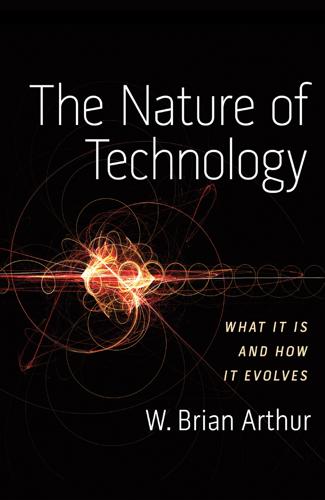
The Nature of Technology
by
W. Brian Arthur
Published 6 Aug 2009
ACKNOWLEDGMENTS This project has grown, rather haphazardly, over several years. It was initially supported by Ernesto Illy, grew into the Stanislaw Ulam Lectures at the Santa Fe Institute in 1998 and the Cairnes Lectures at the National University of Ireland, Galway, in 2000, and in 2001 began to take shape as a book. I thank my home institutions, the Santa Fe Institute and the Intelligent Systems Lab at PARC, for providing refuge during the research and writing, and my colleagues at both places, in particular, Geoffrey West and Markus Fromherz. The International Institute for Applied Systems Analysis in Austria hosted me as Institute Scholar through parts of the writing; and IBM Almaden provided partial support as a Faculty Fellow.
…
Later it came to me that a great deal more of the world emerges from its technologies than from its wars and treaties, and historians are naturally interested in how the world has formed itself. They are therefore interested in how technologies come into being. This book is an argument about what technology is and how it evolves. It grew out of two sets of lectures I gave: the 1998 Stanislaw Ulam Memorial Lectures at the Santa Fe Institute on “Digitization and the Economy”; and the Cairnes Lectures in 2000 at the National University of Ireland, Galway, on “High Technology and the Economy.” It uses material from both series, but builds largely from the Cairnes ones. I have had to make some decisions in the writing of this book.
…
Oncologists may write about cancer, but that does not mean they wish it upon people. I am skeptical about technology, and about its consequences. But I have to admit some things. I have a passion for science and I am enthralled by the magic of technology. And I confess a fondness for aircraft. And for old-fashioned radio electronics. W. Brian Arthur Santa Fe Institute, New Mexico; and Intelligent Systems Laboratory, PARC, Palo Alto, California. 1 QUESTIONS I have many attitudes to technology. I use it and take it for granted. I enjoy it and occasionally am frustrated by it. And I am vaguely suspicious of what it is doing to our lives. But I am also caught up by a wonderment at technology, a wonderment at what we humans have created.
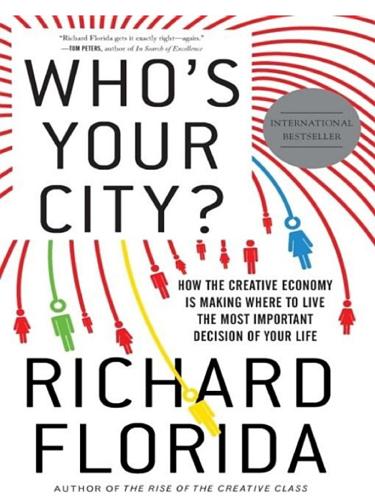
Who's Your City?: How the Creative Economy Is Making Where to Live the Most Important Decision of Your Life
by
Richard Florida
Published 28 Jun 2009
Traffic congestion, rising crime rates, and unaffordable housing are all predictable by-products of city life that pose significant barriers to a city’s future development. Although seemingly such diseconomies could kill a city, compelling research suggests otherwise. According to a multidisciplinary team of researchers led by Geoffrey West of the Santa Fe Institute, large cities and megaregions possess a basic mechanism by which they transcend such limitations.7 Any scientist will tell you that the metabolic rate of biological organisms—the rate at which living things convert food into energy—slows as organisms increase in size. The Santa Fe team wondered whether cities and megaregions might function in a similar way.
…
What makes it advantageous for people who do the same type of work to live near each other—software engineers in Silicon Valley, investment bankers and fashion designers in New York and London, entertainment moguls, actors, and directors in L.A.—is not just that the industries and the companies are there. The companies are there because people can plug into the existing cluster, increase their overall productivity, and make good money. Or as the Santa Fe Institute researchers have found, these larger cities and larger clusters have to generate faster and faster rates of urban metabolism to keep up. The productivity gains brought on by clustering of work is creating a new and more specialized geography of work in the United States and around the world, as jobs and employment opportunities sort into a regional hierarchy by city and location.
…
Rooted economic factors for reasons for staying of Roth, Philip Rothfield, Lawrence Rotman School of Management Rotterdam Rural settings, urban settings v. Russia Rutgers College Ryan, Rebecca Sachs, Jeffrey Sacramento Safety/security(fig.) family and Salt Lake City San Antonio San Diego San Francisco (fig.) San Francisco Bay Area San Jose Sanchez, Matt Sansom, Liva Santa Fe Institute São Paulo Sapporo(fig.) Saxenian, AnnaLee Scandinavia Scenes Schumpeter, Joseph Schwartz, Christine Scientific discovery, clustering of (fig.) Seaside, Florida Seattle Seemel, Gwenn Selective migration Self-actualization openness and Self-esteem Self-expression Seligman, Martin Sense of self Seoul Seoul-San(fig.)

Cities Are Good for You: The Genius of the Metropolis
by
Leo Hollis
Published 31 Mar 2013
From an economic view, this makes sense.’4 It might make sense, and has clearly worked in Bilbao, but this is not the only way to define a creative city, nor does it truly tell us why they will become so important in the future. Recall Geoffrey West’s study into the metabolism of the city. Gathering together all possible data on the urban world, West and his team at the Santa Fe Institute discovered that cities display a superlinear power law when it came to size and output. Thus the city that grows by, say, ten times does not just improve its performance by ten but by sixteen times its original. This was, they proposed, true of the city’s economic power, energy efficiency, even crime rate and levels of disease; surprisingly, it is also true for the city’s creativity: ‘wages, income, domestic product, bank deposits, as well as rates of invention, measured by new patents and employment in creative sectors all scale superlinearly with city size’.5 Thus, the complex interweave of connections and people, the agglomeration of knowledge and ideas, is an amazing incubator of innovation.
…
It also shows that a larger animal is likely to live longer than a small one: for while most animals die at between 1–2 billion heartbeats, a chicken heart beats 300 times a minute, an elephant’s only 30 times. Kleiber found a direct relationship between size and life expectation. In his research West refined Kleiber’s original laws and attempted to find out why they worked. In 2005 West was named president of the Santa Fe Institute, the mecca of study in Complexity Theory, set up in the 1980s to explore the connections between physics, mathematics, computation and evolutionary biology (the institute is so multidisciplinary that even the novelist Cormac McCarthy has a desk in the facility). There, West turned his focus on the nature of cities, perhaps the greatest self-organising organism of all; the results would gain him the honour of being named one of Time magazine’s ‘100 Most Influential People in the World’.
…
One way to explain this unexpected efficiency is to return to Geoffrey West’s model for the metabolism of the city. As he showed, when a city doubles in size, there is a scaling of efficiencies. This means that as more people come to live in the metropolis they share services and resources; thus as a city doubles in population size, it only needs to increase its carbon footprint by 85 per cent, including everything from heating and housing to the number of petrol stations; representing an energy saving of 15 per cent. As the metropolis grows it becomes more energy efficient, not less. Indeed, in one interview Geoffrey West went so far as to state: ‘The secret to creating a more environmentally sustainable society is making our cities bigger.
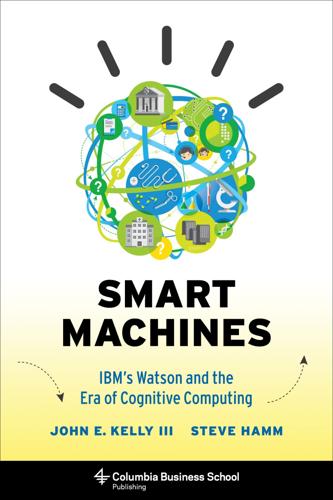
Smart Machines: IBM's Watson and the Era of Cognitive Computing (Columbia Business School Publishing)
by
John E. Kelly Iii
Published 23 Sep 2013
The more diverse groups of people interact with one another, the more likely it is that new ideas will germinate and take root. This charged mixture, along with bold leadership and new technology, could lead to a global renaissance for cities, which could grow not just bigger but better. According to Geoffrey West of the Santa Fe Institute, cities are the sources of our problems but also can be the sources of our solutions. In order to achieve that goal, however, “we desperately need a serious scientific theory of cities,” Geoffrey said at a Ted Talk in Edinburgh, Scotland, in 2011.3 What would a scientific theory of cities look like?
…
Jonathan Mahler, Ladies and Gentlemen, the Bronx is Burning: 1977, Baseball, Politics, and the Battle for the Soul of a City (New York: Farrar, Straus and Giroux, 2005). 2. United Nations Department of Urban and Social Affairs, “World Urbanization Prospects: The 2007 Revision,” executive summary, February 2008, http://www.un.org/esa/population/publications/wup2007/2007WUP_ExecSum_web.pdf. 3. Geoffrey West, TED Talk, Edinburgh, Scotland, 2011, video, https://www.youtube.com/watch?v=XyCY6mjWOPc. 4. “Fighting Terrorism in New York City,” 60 Minutes, CBS television, September 25, 2011. 5. Paul Maglio, IBM Research, interview, July 6, 2012. 6. Arizona State University, “Study Maps Greenhouse Gas Emissions to Building, Street Level for U.S.

The Evolution of Everything: How New Ideas Emerge
by
Matt Ridley
The opposite is true of economic growth and innovation – the bigger the city, the faster these increase. Doubling the size of a city boosts income, wealth, number of patents, number of universities, number of creative people, all by approximately 15 per cent, regardless of where the city is. The scaling is, in the jargon, ‘superlinear’. Geoffrey West of the Santa Fe Institute, who discovered this phenomenon, calls cities ‘supercreative’. They generate a disproportionate share of human innovation; and the bigger they are, the more they generate. The reason for this is clear, at least in outline. Human beings innovate by combining and recombining ideas, and the larger and denser the network, the more innovation occurs.
…
The first laptop, in 1982, came when computers had at last got small enough not to crush your knees through the floor. The sea fashions boats Kevin Kelly’s 2010 book is not the only one in recent years that has begun to describe technology in evolutionary terms. In 2009 Brian Arthur of the Santa Fe Institute published a book called The Nature of Technology: What it is and How it Evolves, in which he concluded ‘that novel technologies arise by combination of existing technologies and that (therefore) existing technologies beget further technologies . . . we can say that technology creates itself out of itself’.
…
(with Paul Paddock) 207 Page, Larry 188 Pagel, Mark 80, 81–2 Pakistan 32, 206 Paley, William 38–9, 41–2, 51 Panama 286 Paris 102, 121, 254 Park, Walter 139 Parris, Matthew 303 Parys Mine Company, Anglesey 278 Pascal, Blaise 273 Paul, Senator Rand 241 Paul, Ron 114, 285, 292, 295 Paul, St (Saul of Tarsus) 8, 258, 264 Pauling, Linus 121 Pax Romana 239 Peace High School, Hyderabad (India) 181 Peel, Robert 246, 283–4 Peer-to-Peer Foundation 308 Peninsular War 280 People’s Printing Press 288 personality: and the blank slate 156–7, 158–9; and genes 159, 160–2; and homicide 169–71; innateness of behaviour 157–8; intelligence from within 165–7; non-genetic differences 162–5; and parenting 159–60, 161–2; and sexual attraction 172–3; and sexuality 167–9 Peterloo massacre (1819) 245 Pfister, Christian 276 Philippe, duc d’Orléans 286 Philippines 190 Philips, Emo 140 Philostratus 258 Phoenicia 101 Pinker, Steven 28, 30, 31–3, 172–3; The Better Angels of Our Nature 28–9 Pinnacle Technologies 136 Pitt-Rivers, Augustus 127 Pixar 124 Planned Parenthood Foundation 204 Plath, Robert 126 Plato 7, 11 Plomin, Robert 165, 167 Poincaré, Henri 18, 121 Polanyi, Karl 133 Polanyi, Michael 253 politics 314–16 Poor Law (1834) 195 Pope, Alexander 15 Popper, Karl 253; ‘Conjectures and Refutations’ 269 Population: American eugenics 200–3; control and sterilisation 205–8; and eugenics 197–9; impact of Green Revolution 208–10; Irish application of Malthusian doctrines 195–7; Malthusian theory 193, 194–5; and one-child policy 210–14; post-war eugenics 203–5 Population Crisis Committee 206 Portugal, Portuguese 134 Pottinger, Sir Harry 233 ‘Primer for Development’ (UN, 1951) 232 Prince, Thomas 242 Pritchett, Lant 179–80; The Rebirth of Education 176 Procter & Gamble 130 Proudhon, Pierre-Joseph 194–5 Prussia 176 Psychological Review 159 Putin, Vladimir 305 ‘The Puzzle of Monogamous Marriage’ (Henrich, Boyd & Richerson) 89 Pythagoras 85 Pythagorism 259 Qian XingZhong 213 Quesnay, François 98 Raines, Franklin 292 Ramsay, John 25 RAND Corporation 206, 300 Ravenholt, Reimert 206 Ray Smith, Alvy 124 Reagan, Ronald 254, 290 Red Sea 82 Reed, Leonard 43 Reformation 216, 220 religion: and climate change/global warming 271–6; and cult of cereology (crop circles) 264–6; existence of God 14–15; heretics and heresies 141–2; as human impulse 256–8; predictability of gods 259–60; and the prophet 260–3; temptations of superstition 266–8; variety of beliefs 257–8; vital delusions 268–71 Renaissance 220 Ricardo, David 104–5, 106, 246 Richardson, Samuel 88 Richerson, Pete 78, 89 Ridley, Matt, The Rational Optimist: How Prosperity Evolves 110–11, 126–7 Rio de Janeiro 92 Roberts, Russ 4 Robinson, James 97–8 Rockefeller Foundation 229, 230–1 Rodriguez, Joã 47–8 Rodrik, Dani 228 Rome 257, 259, 260 Romer, Paul 109 Roosevelt, Franklin Delano 251 Roosevelt, Theodore 197 Rothbard, Murray 243 Rousseau, Jean-Jacques 165, 216 Rowling, J.K. 122 Royal Bank 281 Royal Mint 278, 279 Royal Navy 297 Royal United Services Institution 198 Rudin, Ernst 202 Rufer, Chris 226 Runciman, Garry, Very Different, But Much the Same 94 Rusk, Dean 206–7 Russell, Lord John 195 Russia 119, 204, 227–8, 250, 303 Russian Revolution 318 Sadow, Bernard 126 Safaricom 296 St Louis (ship) 202–3 St Maaz School, Hyderabad (India) 181 Salk Institute, California 67 San Marco, Venice 53 Sandia National Laboratory 136 Sanger, Margaret 201, 204 Santa Fe Institute 93, 126 Santayana, George 10 Sapienza, Carmen 67 Satoshi Nakamoto 307–8, 309–10, 312 Schiller, Friedrich 248 Schmidt, Albrecht 222 Schumpeter, Joseph 106, 128, 251; Capitalism, Socialism and Democracy 106–7; Theory of Economic Development 106 science: as driver of innovation 133–7; as private good 137–9; pseudo-science 269 Science (journal) 70 Scientology 263 Scopes, John 49 Scotland 17, 280–2, 286 Scott, Sir Peter 211 Scott, Sir Walter (‘Malachi Malagrowther’) 283 Second International Congress of Eugenics 200 Second World War 105, 138, 203, 231, 252, 254, 318 Self-Management Institute 226 Selgin, George 297; Good Money 279, 280 Shade, John 188 Shakespeare, William 15, 131, 216, 224 Shanker, Albert 180 Shaw, George Bernard 197 Shaw, Marilyn 155–6 Shelley, Mary, Frankenstein 16 Shelley, Percy 16 Shockley, William 119 Shogun Japanese 130 Sierra Club 204 Silk Road 311–12 Silvester, David 274 Simon, Julian 209 Singapore 190 Sistine Chapel, Rome 256 Skarbek, David, The Social Order of the Underworld 237–8 Skinner, B.F. 156, 267–8 Skirving, William 244 skyhooks 7, 13, 14, 18, 65, 67, 71, 150, 267 Slumdog Millionaire (film, 2008) 185 Smith, Adam 3, 20, 21, 22–7, 28, 33, 110, 112, 117, 234, 243, 244, 246, 249; The Theory of Moral Sentiments 23–4, 27, 28, 37–8, 98; The Wealth of Nations 24, 38, 98–100, 103–4, 137 Smith, John Maynard 53 Smith, Joseph 263, 264, 266 Smithism 110 Snowden, Edward 303 SOLE (self-organised learning environment) 186 Solow, Robert 108, 137 Somalia 32 Song, Chinese dynasty 101 Song Jian 210–11, 212–13 South America 247 South Korea 125, 190, 229 South Sea Bubble (1720) 285, 294 South Sudan 32 Soviet-Harvard illusion 3 Soviet Union 114, 122 Spain 101, 247 Sparkes, Matthew 313 Sparta 101 Spencer, Herbert 216–17, 249, 253 Spenser, Edmund 15 Spinoza, Baruch 20, 141–2, 148, 268; Ethics 142; l’Esprit des lois 142–3 Sputnik 138 Stalin, Joseph 250, 252, 253 Stalling, A.E. 10 Stanford University 184, 185 Stealth bomber 130 Steiner, George, Nostalgia for the Absolute 266 Steiner, Rudolf 271 Steinsberger, Nick 136 Stephenson, George 119 Stewart, Dugald 38, 244 Stiglitz, Joseph 292 Stockman, David 288, 289–90; The Great Deformation 294 stoicism 259 Stop Online Piracy Act (US, 2011) 304 Strawson, Galen 140 Stuart, Charles Edward ‘The Young Pretender’ 282 Stuart, James Edward ‘The Old Pretender’ 281 Sudan 32 Summers, Larry 110 Sunnis 262 Suomi, Stephen 161 Sveikauskas, Leo 139 Swan, Joseph 119 Sweden 101, 284 Switzerland 32, 190, 247, 254 Sybaris 93 Syria 32 Szabo, Nick 307, 310; ‘Shelling Out: The Origins of Money’ 307 Tabarrok, Alex 132; Launching the Innovation Renaissance 132 Taiwan 190 Tajikistan 305 Taleb, Nassim 3, 92, 107, 135, 285, 312 Tamerlane the Great 87 Taoism 259, 260 Taylor, Winslow 250 Taylorism 250, 251 Tea Act (UK, 1773) 282n Tea Party 246 technology: biological similarities 126–31; boat analogy 128; computers 123–5, 126; copying 132–3; electric light 1–2; and fracking 136; inexorable progress 122–6, 130–1; innovation as emergent phenomenon 139; and the internet 299–316; light bulbs 118–19, 120; many-to-many 300; mass-communication 200; open innovation 130; patents/copyright laws 131–2; and printing 220; and science 133–9; simultaneous discovery 120–2; skunk works 130; software 131 TED (Technology, Entertainment, Design) lecture 177 Thatcher, Margaret 217 Third International Congress of Eugenics 201–2, 204 Third World 231–2 Thrun, Sebastian 185 Time (magazine) 241 The Times 308 Togo 94 Tokyo 92 Tolstoy, Leo 217 Tooby, John 43 Tooley, James 181–4 Toy Story (film, 1995) 124 Trevelyan, Charles 195 Tuchman, Barbara, A Distant Mirror 29 Tucker, William 90; Marriage and Civilization 89 Tullock, Gordon 35 Turner, Ted 213 Twister (messaging system) 313 Twitter 310, 313 U-2 reconnaissance plane 130 Uber 109 UK Meteorological Office 275 UN Codex Alimentarius 254 UN Family Planning Agency 213 UN Framework Convention on Climate Change 254–5 UN General Assembly 305 UNESCO 205 Union Bank of Scotland 281 United Nations 131, 213, 232, 305 United States 34, 122, 125, 138, 139, 176, 200–2, 232, 235–8, 245, 247, 250, 254, 284–5, 286, 302 United States Supreme Court 50 universe: anthropic principle 18–20; designed and planned 7–10; deterministic view 17–18; Lucretian heresy 10–12; Newton’s nudge 12–13; swerve 14–15 University of Czernowitz 106 University of Houston 71 University of Pennsylvania 133 UNIX 302 Urbain Le Verrier 120–1 US Bureau of Land Management 240 US Department of Education 240 US Department of Homeland Security 240, 241 US Federal Reserve 285, 286, 288, 293, 297, 309 US Financial Crisis Inquiry Commission 294 US Internal Revenue Service (IRS) 240 US National Oceanographic and Atmospheric Administration 240 US Office of Management and Budget 290 Utah 89 Uzbekistan 305 Vancouver 92 Vanuatu 81 Vardanes, King 258 Veblen, Thorstein 249 Verdi, Giuseppe: Aida 248; Rigoletto 248 Veronica (search engine) 120 Versailles Treaty (1919) 318 Victoria, Queen 89 Virgil (Publius Vergilius Maro) 10, 23 vitalism 270–1 Vodafone 296 Vogt, William 205, 209; Road to Survival 204 Voltaire, François-Marie Arouet 14, 15, 20, 22, 25, 41, 143, 243, 268; Candide 15 Volvo 101 Wagner, Andreas 47 Wall Street Journal 125, 132 Wallace, Alfred Russell 20, 54–5, 196 Wallison, Peter 294 Walras, Léon 106 Waltham, David, Lucky Planet 19 Walwyn, Thomas 242 Wang Mang, Emperor 267 Wang Zhen 212 Wannsee conference 198 Wapinski, Norm 136 Washington, George 220, 222, 240 Washington Post 241 Watson, James 121, 145 Webb, Beatrice 197 Webb, Richard 5, 319 Webb, Sidney 197 Webcrawler 120 Wedgwood family 38 Wedgwood, Josiah 199 Weismann, August 55 Wells, H.G. 197, 251 West, Edwin 178; Education and the State 177 West, Geoffrey 93 West Indies 134, 286 Whitney, Eli 128 Whittle, Frank 119 Whole Foods 227 Wikipedia 188, 304–5 Wilby, Peter 315 Wilhelm II, Kaiser 198, 247 Wilkins, Maurice 121 Wilkinson, John 278–9 Willeys 278–9, 280 Williams, Thomas 278 Williamson, Kevin 33; The End is Near and it’s Going to be Awesome 238–9 Wilson, Catherine 12 Wilson, Margo 171 Wolf, Alison, Does Education Matter?
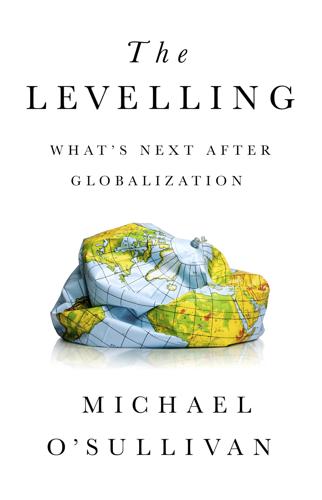
The Levelling: What’s Next After Globalization
by
Michael O’sullivan
Published 28 May 2019
Tett, “An Anthropologist in the Boardroom,” Financial Times, April 21, 2017. 23. On development economics, see, for example, Rodrik and Rosenzweig, Handbook of Development Economics. And Sir Thomas Bingham’s The Rule of Law is worth a read. 24. Berlin, The Power of Ideas. 25. One of the Santa Fe Institute’s leading scholars, Geoffrey West, gives a good account of it: “What a fantastic melting pot. There is almost no hierarchy, and its size is sufficiently small that everyone on-site gets to know everyone else, the archaeologist, economist, social scientist, ecologist and physicist all freely interact on a daily basis to talk, speculate, bullshit and seriously collaborate on questions big and small.”
…
This mingling of disciplines is critical because, to reiterate a point made earlier in this book, the forces operating on our world—financial, scientific, social, economic, and diplomatic—are intertwined. A useful example of the multidisciplinary way we need to think about the world comes from the Santa Fe Institute, which is unique because of the eminence of its researchers but also in the way they bring together perspectives from very different fields of study to try to better understand complex, adaptive systems.25 The nub of The Levelling is that the world is entering a transition phase moving toward a state of being that will be different from what we have enjoyed in the past thirty years.
…
See poles in multipolar world Reich, Robert, 127 religion, 90 Remonstrance of Many Thousand Citizens (Overton), 85–86 “rent economy,” 142 republic, 3, 278 Republican Party (US), 269–270 La République En Marche, 110–111, 117 research, and productivity, 142–143 Revival Bank, 300–301 “Rheinish capitalism,” 202 Richmond Federal Reserve, 214 right-wing parties, 54–55, 105–107 Riksbank, 171, 177 risks (financial) consequences, 206, 208–209 and debt, 173–174, 184–185, 201, 205–207, 209 treaty on, 184, 207–208 The Road to Somewhere (Goodhart), 79–80 Rodrik, Dani, 237–238 Rome and Roman Empire, 151, 152 Romer, Paul, 69 Roosevelt, Franklin D., 291 Roosevelt, Theodore, 293–294 rule of law, and economy, 161–162 Russia, 137, 143–144, 160, 218–219, 296 same-sex marriage, 49–50 Santa Fe Institute, 74 Santolaria, Nicolas, 26 Sawers, John, 249 Scales, Bob, 67 Schott, Peter, 35 Schröder, Gerhard, 107 Schwab, Klaus, 142 science, ideas and paradigm shifts, 71–72 Scotland, 87, 251–253 search engines, 214 Second French Empire, 227 Selassie, Bereket, 281 Shanghai Cooperation Organization (SCO), 245 Shiller, Robert, 65 Shorrocks, Tony, 42 Skilling, David, 271 skyscrapers, as power, 211–212 small-sized nations in multipolar world, 244, 245–246, 259–262 Smoot, Reed, 65 Smoot-Hawley Tariff Act (1930), 65 social change, 47–51 social media, 49, 74, 107, 108–109, 141, 273–274 social mobility, 47 soft vs. hard power, 219–220, 223–224 Solow, Robert, 159–160 Somewhere/Anywhere theory, 79–80 Soros, George, 107 sortition, 109–110 Spanberger, Abigail, 129 Special Drawing Rights (SDR) bonds, 265–266 Spinoza, 94 St.
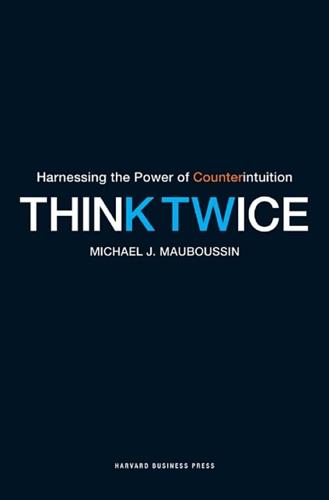
Think Twice: Harnessing the Power of Counterintuition
by
Michael J. Mauboussin
Published 6 Nov 2012
My thanks to Steven Crist, Scott Page, Tom Seeley, Stephen Stigler, Steve Strogatz, and David Weinberger. The Santa Fe Institute has been a tremendous source of learning and inspiration for me. SFI takes a multidisciplinary approach to understanding the common themes that arise in complex systems. The institute attracts people who are intellectually curious and collaborative, and I am appreciative of the willingness of the scientists, staff, and network members to share so much with me. Particular thanks go to Doug Erwin, Shannon Larsen, John Miller, Scott Page, and Geoffrey West. Reading a draft of a manuscript and providing feedback to the author is difficult and time-consuming.
…
Mauboussin has been an Adjunct Professor of Finance at Columbia Business School since 1993 and is on the faculty of the Heilbrunn Center for Graham and Dodd Investing. In 2009, he received the Dean’s Award for Teaching Excellence by an Adjunct Faculty Member. Mauboussin is also affiliated with the Santa Fe Institute, the founding institution of complexity science and a global leader in multidisciplinary research. Mauboussin received an AB in government from Georgetown University. He lives in Darien, Connecticut, with his wife and five children.

Whole Earth Discipline: An Ecopragmatist Manifesto
by
Stewart Brand
Published 15 Mar 2009
Looking at everything from patents to personal income to electrical cable length in a variety of cities, the researchers found that not only do cities increase their creativity with increasing size, but the relation is “superlinear”: when a city doubles in size, it more than doubles its rate of innovation. A summary of the paper in the Santa Fe Institute Bulletin reported thatIndividual productivity rises (15% per person when the city doubles) as people get busier. Average walking speeds increase. Businesses, public spaces, nightclubs, and public squares consume more electricity. The city draws in more inventors, artists, researchers, and financiers.
…
prairies Pratchett, Terry precautionary principle Primeiro Comando da Capital Prinn, Ronald Proceedings of the National Academy of Sciences (PNAS) Program for the Human Environment Progress in Nuclear Energy Prospect ProVitaMinRice Consortium Psychology Today Public IP Resource for Agriculture (PIPRA) Puszcza Białowieska Quadir, Iqbal Quadir, Kamal Quist, David radiation radiation mutagenesis Raffensperger, Carolyn Rain of Fire and Ice (Lewis) rain forests Ramdas, Kavita Randall, Doug Rapley, Chris Raven, Peter “Real GM Food Scandal, The,” Real Goods recombinant DNA research reconciliation ecology recycling Reed, Lou Rees, William Register, Katherine Renewistan “Restoring the Forests” (Victor and Ausubel) resveratrol Revelle, Roger Revenge of Gaia, The (Lovelock) Rewilding North America (Foreman) Reynolds American Rhoades, Willard rice Rice, Charles Rifkin, Jeremy “Ring of Bone” (Welch) Rio de Janeiro, Brazil risk balancing Robb, John Roberts, Gregory David Rockefeller Foundation Rocky Mountain Institute Rodale Institute Romer, Paul Ronald, Pamela Roosevelt, Franklin D. Rosenfeld, Arthur Rosling, Hans Roundup (glyphosate) Rucker, Rudy Ruddiman, William Rural Advancement Foundation International Russia nuclear power and Rust, James Safaricom Sagan, Dorion salmon Salmonella Salter, Stephen Sandia National Laboratories Santa Fe Institute Bulletin Santillo, David Santoki, Rajesh Kumar Raghavji São Paulo, Brazil Sasakawa, Ryoichi satellites Sausalito, Calif. Savory, Allan Sax, Dov Sayre, Richard Schaeffer, John Schneider, Stephen Schwartz, Peter Schweickart, Russell L. “Rusty,” Science Science Daily Scotland Second Nature (Pollan) Seed Seeds for the Future (Thomson) Seminars About Long-term Thinking Serageldin, Ismail sex Shadow Cities (Neuwirth) Shantaram (Roberts) Shapiro, Robert Shelley, Mary Shirky, Clay Shiva, Vandana Shoreham Nuclear Power Plant shotgun sequencing Sierra Club Silent Spring (Carson) Simonyi, Charles Singapore Skeptical Environmentalist, The (Lomborg) Slate slums cellphones in crime and economy of education and literacy in globalization and infrastructure in militias in recycling in religion and women and smallpox Smetacek, Victor Smith, Bruce Smits, Willie Snyder, Gary Soberón, Jorge Socolow, Robert solar dimming solar power Sonoma County Farm Bureau sorghum Soulé, Michael South Africa genetic engineering and soybeans space mirrors space program species, inventory of Spengler, Oswald squash “Stabilization Wedges” (Socolow and Pacala) Starved for Science (Paarlberg) Stewart, C.
…
“One of the basic principles of cities is that it’s more efficient to bring people together,” says physicist Geoffrey West. “You need a little bit less of everything per person. It’s the exact same way in biology. As animals get bigger, they require less energy to support each unit of tissue.” But organisms move more slowly as they increase in size (compare a shrew’s whirring heart rate to the stately thump of an elephant’s heart), whereas cities speed up as they get bigger. That was the news in a landmark paper, “Growth, Innovation, Scaling, and the Pace of Life in Cities,” which appeared in the Proceedings of the National Academy of Sciences in 2007; Geoffrey West was a coauthor. Looking at everything from patents to personal income to electrical cable length in a variety of cities, the researchers found that not only do cities increase their creativity with increasing size, but the relation is “superlinear”: when a city doubles in size, it more than doubles its rate of innovation.

Smart Cities: Big Data, Civic Hackers, and the Quest for a New Utopia
by
Anthony M. Townsend
Published 29 Sep 2013
Do Sound Urban Science We have seen how the introduction of new scientific ideas about cities and data-driven approaches to urban management and planning often bring unwelcome baggage and unintended negative consequences. As I set out to write this book in 2010, a coterie of “hard” scientists—physicists and mathematicians—at the prestigious Santa Fe Institute proclaimed the launch of a new science of cities from their desert retreat. That December, a cover story for the New York Times Magazine breathlessly reported on empirical studies of urban growth conducted by Geoffrey West and his colleague Luis Bettencourt. (Ominously, perhaps, the article was written by Jonah Lehrer, who would later resign from his position as staff writer at the New Yorker in 2012 following accusation of plagiarism for several articles—not including this one).
…
West dazzled audiences around the world with these seemingly universal truths. Yet as my writing came to an end late in 2012, these claims had begun to come under intense scrutiny. The first salvo came from one of West’s and Bettencourt’s own colleagues, Carnegie Mellon University statistician Cosma Shalizi, who is himself listed as “external professor” on the Santa Fe Institute website. Shalizi tried to replicate West’s and Bettencourt’s analysis, and what he discovered was disconcerting for those who had bought into West’s elegant theory. In a paper posted to the electronic prepress archive arXiv, Shalizi argued that West and Bettencourt had only looked at city-wide figures and not per capita values.
…
While we celebrate their diversity, as economists such as Harvard University’s Ed Glaeser argue, cities are actually social search engines that help like-minded people find each other and do stuff. “People who live in cities can connect with a broader range of friends whose interests are well matched with their own,” he argues in his 2010 book Triumph of the City.23 The big buildings we associate with urbanity are merely the support system that facilitates all of those exchanges. As Geoffrey West, a physicist who studies how cities grow, explains, “Cities are the result of clustering of interactions of social networks.”24 And they are repositories of the civilization and culture that grow from these dealings. They are, as urban design theorist Kevin Lynch once put it, “a vast mnemonic system for the retention of group history and ideals.”25 Cities are indeed an efficient way of organizing activity, since infrastructure can be shared.

Brave New Work: Are You Ready to Reinvent Your Organization?
by
Aaron Dignan
Published 1 Feb 2019
But by 2016 that number had been reduced to twenty-four years. The data suggests this pattern will continue. At the current rate of churn, about half the list will be replaced in the next decade. And by 2027 the average tenure will shrink to just twelve years. This fits with broader research recently completed by the Santa Fe Institute in New Mexico. In its analysis of more than 25,000 companies, it found that the half-life of all firms was roughly 10.5 years. Big business, small business, it doesn’t matter. Our days are numbered. Organizations are under siege. If we can’t learn to adapt, we may never see another century-old company.
…
L. and Associates, 16, 69–70, 79, 142 Gorilla Glass, 103 Gould, Stephen Jay, 103 governance meetings, 122 governing constraints, 46 Gower, Bob, 222 Graham, Benjamin, 30 Graham, Paul, 230 Grant, Adam, 142 gratitude, 148 Gray, Dave, 196 G Suite, 135 Haier, 76, 80 Hamel, Gary, 26 Hammond, Robert, 188 Handelsbanken, 13, 94, 227–28 Hansson, David Heinemeier, 68–69 Harrison, Scott, 224–25 Hawk, Tony, 259 healthcare industry, 34–35 Buurtzorg in, 13, 34–36, 38, 79, 105, 144, 218 Heath, Chip and Dan, 212 Heppner, Frank, 46 Herzberg, Frederick, 165 hierarchies, 77–78, 258 High Line, 188 Hillaker, Harry, 88 Hillman, James, 36 hiring, 79, 142–43 Hoffman, Reid, 88 Holacracy, 71, 122, 202 HolacracyOne, 89 Human Side of Enterprise, The (McGregor), 39–41 Husney, Jordan, 89 Huxley, Aldous, 22 hygiene factors, 165, 173 ICBD (Intentions, Concerns, Borders, and Dreams), 222–23 IDEO, 142–43 incentive compensation, 171–72 Indie.vc, 253–54 influence, 78 information, 14, 54, 127–37 information symmetry, 130, 134, 170, 190 initial public offerings (IPOs), 254, 255 Innosight, 29 innovation, 14, 54, 102–9, 188 innovator’s dilemma, 91 integration vs. functions, 79–80 Integrative Decision Making (IDM), 71–73 internet, 84, 131 Intrinsic Motivation (Deci), 42 investment, 251–55 James, LeBron, 143, 172 Jamieson, Alex, 222 Jobs, Steve, 103 job satisfaction, 165 Johnson, Steven, 189 Joint Special Operations Command (JSOC), 128–29, 130 Kahneman, Daniel, 165 Kanigel, Robert, 22 Kegan, Robert, 152–53 knee-jerk reactions, 28 Kotter, John, 186 KPMG, 32 Kroger, 59 Kroghrud, Ivar, 147 labor productivity growth, 33–34 Lahey, Lisa, 152–53 Laloux, Frederic, 105 language, 217 Lasseter, John, 191 lattice organizations, 142 leader, role of, 223–28 leadership gap, 166 Leading Change (Kotter), 186 Lean Change Management (Little), 201 Lean Startup method, 107–8 learning, 152, 153, 156–57, 160, 162, 200 by doing, 230–31 faster, 88 games and activities for, 200 retrospectives and, 123–24 validated, 108 Legacy Organizations, 5, 21, 38, 47, 59, 237, 258 authority in, 66 decision making in, 69 information in, 129, 131 measurement in, 60 membership in, 140 operating systems of, 12 performance targets and, 97 strategy in, 86 liminal space, 196, 197, 201 Little, Jason, 201 Little Book of Beyond Budgeting, The (Morlidge), 96–97 locus of control, 154, 155 Long-Term Stock Exchange (LTSE), 254–55 looping, 193, 201–16, 229, 236 and conducting experiments, 213–16 and proposing practices, 207–12 and sensing tensions, 202–6 Lyft, 169 Machiavelli, Niccolò, 248 Made to Stick (Heath and Heath), 212 management, 26–27, 81 innovations in, 20 open-book, 130 org charts for, 7–9, 24, 77, 78, 81, 114, 189 market pay, 167–68 Marquet, David, 67 Maslow, Abraham, 38 Masters of Scale, 88 mastery, 14, 54, 151–62 maturity, 154, 155–56, 255–56 McChrystal, Stanley, 128–29, 130, 197 McGregor, Douglas, 39–41, 158 McKeown, Greg, 62 McKinsey, James O., 24–25, 95 McKinsey & Company, 24, 32, 143, 187 Medium, 84–85, 86 meetings, 3–4, 6, 119 moratorium on, 123 in OS Canvas, 14, 54, 118–26 structures in, 124–25 membership, 14, 54, 138–50 mergers and acquisitions (M&A), 32, 33 metrics, 60–61 Meyer, Erin, 258 Microsoft, 170 microwave, 103 Mindset (Dweck), 154 mindsets: fixed and growth, 154–55 see also Complexity Conscious mindset; People Positive mindset minimum viable policy, 68–69 Mitchell, Melanie, 129 Mitra, Sugata, 257 Morlidge, Steve, 96–97 Morning Star Company, 13, 55–56, 99, 168 motivation, 41–42, 64, 74, 165, 173 multiplayer software, 135 Münsterberg, Hugo, 25 murmuration, 194 Netflix, 113, 167–68, 219 Netscape, 59 networks, dynamic, 77–78 New York Summit, 147 New York Times, 147, 165 Nietzsche, Friedrich, 179 noncompete clauses, 144 Office of Strategic Services, U.S., 6–7 Ohno, Taiichi, 20, 111 OKR (objectives and key results), 87–88 Oktogonen Foundation, 94 Olympic basketball team, U.S., 172 one-on-ones, 121–22 OODA loop, 88, 90 Operating Manual for Spaceship Earth (Fuller), 247 operating system, organizational (OS), 12–13, 17, 18, 43, 215 agility and, 19 changing, see change economic, 246–47, 248 evolutionary, see Evolutionary Organizations management innovations and, 20 Operating System Canvas (OS Canvas), 14, 53–57 authority, 14, 54, 63, 65–74 compensation, 14, 54, 163–73 how to use, 174, 270–72 information, 14, 54, 127–37 innovation, 14, 54, 102–9, 188 mastery, 14, 54, 151–62 meetings, 14, 54, 118–26 membership, 14, 54, 138–50 purpose, 14, 54, 68–64, 67, 85 resources, 14, 54, 93–101 strategy, 14, 54, 83–92 structure, 14, 54, 75–82, 111 workflow, 14, 54, 110–17 operating systems, 9 for traffic flow, see traffic flow organizational debt, 27–29, 91 organizations, 255 agility in, 19, 20, 28–29 as complex systems, 45, 187–88 cooperatives, 250 decentralized autonomous, 250–51 entry/exit rates of, 33 evolutionary, see Evolutionary Organizations governance of, 122 investment and, 251–55 lattice, 142 legacy, see Legacy Organizations longevity of, 29–30 mergers and acquisitions, 32, 33 new forms of incorporation, 248–51, 252 operating systems of, see operating system, organizational org charts, 7–9, 24, 77, 78, 81, 114, 189 return on assets of, 31, 32 as set of membranes, 139–40 three structures of, 78 OS Canvas, see Operating System Canvas Ostrom, Elinor, 98 over statements, 89 Page, Larry, 136 Patagonia, 85, 130–31, 133, 249, 259 pay, see compensation People Positive mindset, 13, 36–43, 53, 55–57, 190, 195, 199, 244, 258–59, 267 authority and, 74 compensation and, 173 information and, 137 innovation and, 109 mastery and, 162 meetings and, 126 membership and, 150 purpose and, 64 resources and, 101 strategy and, 92 structure and, 82 workflow and, 117 Percolate, 131–32 performance, 46 individual, 158–60, 172 Petrarch, 224 Pflaeging, Niels, 78, 180, 189–90 Pixar, 119–20, 191–92 planning, 91, 95, 96, 100 see also strategy Plato, 3 Play-Doh, 103 polycentric governance, 98 PopSugar, 135 practices, proposing, 207–12 priming, 193, 197–201, 236 Principles (Dalio), 152 Principles of Scientific Management, The (Taylor), 23–24, 29 priorities, 88–89 profit, 59–60 Project Aristotle, 221 projects, 113, 114, 117 management of, 112, 237 sprints and, 115, 237–38 status of, 121, 132 work in progress and, 115–16, 132 proposing practices, 207–12 psychological safety, 219–23, 236 purpose, 14, 54, 68–64, 67, 85 push vs. pull, 131–32 Quaroni, Guido, 192 railroads, 8, 22–23 Raworth, Kate, 246–47 Ready, The, 17–19, 123, 125, 143, 149, 174, 190, 217 recruiting and hiring, 79, 142–43 Reddit, 135 red team, 90–91 REI, 85 Reinventing Organizations (Laloux), 105 relatedness, 42 relief, 236–37 reputation, 78 resistance, 233–34 resources, 14, 54, 93–101 retrospectives, 123–24 return on assets (ROA), 31, 32 Rework (Fried and Hansson), 68–69 Ries, Eric, 107–8, 254, 255 risk, 68, 122, 132, 231 barbell strategy and, 86–87, 105–6 ritual, 143 Robertson, Brian, 202 Rogers, Carl, 38 roles, 72, 77, 80, 81, 111, 141, 157 decision making and, 72, 73 mixing of, 157–58 Rotter, Julian B., 154 roundabouts, 10–12, 13, 47, 55 Ruimin, Zhang, 76 Russell, Bertrand, 247 Ryan, Richard, 42 sabotage, 5–7 safety, psychological, 219–23, 236 Sahlberg, Pasi, 12 Saint-Exupéry, Antoine de, 212 salary, 164, 165, 168 see also compensation Salary.com, 170 Salesforce, 119 S&P 500, 29–30, 60 Santa Fe, USS, 67 Santa Fe Institute, 29 scaling change, 234–39 scenario planning, 90 Schaar, Tom, 259 Scientific Management, 22–24, 26, 48 Scott, Kim, 120 scribes, 122–23 Securities and Exchange Commission (SEC), 104, 255 self-determination theory, 42 self-employment, 33 self-evaluation, 154 self-management, 16–17 self-set pay, 168 Semler, Ricardo, 245, 258 Seneca, 189 Senge, Peter, 153, 202 sensing, 202–6, 231–32 signal-controlled intersections, 9–12, 13, 46, 55 Simple Sabotage Field Manual, 7 Sinek, Simon, 222 Sisodia, Raj, 60 Slack, 119, 134, 135 SLAM teams, 80 Snowden, Dave, 156, 188–89 Sociocracy, 70–71, 122 space: creating, 224–26, 228 holding, 226–28 liminal, 196, 197, 201 Spencer, Percy, 103 Spotify, 112–13, 160, 218 spread, 217–18 sprints, 115, 237–38 standards vs. defaults, 106–7 Starbucks, 85 startups, 27–28, 33, 76–77, 107, 197, 254 Lean Startup method, 107–8 status quo, 48, 90–91, 233 steering metrics, 60–61 stocks, 30–31 strategy, 14, 54, 83–92 strategy+business, 76 strategy review meetings, 3–4 structure, 14, 54, 75–82, 111 Svenska Handelsbanken, 13, 94, 227–28 Taleb, Nassim Nicholas, 86–88, 106 targets, 95, 97, 101 Taylor, Frederick Winslow, 21–24, 26, 29, 111, 153, 186, 257 teams, 79, 82, 113, 117, 141, 142, 172, 225–26 Ballpoint game for, 199–200 charters for, 144–45 dynamic, 81 gratitude and, 148 ICBD technique for, 222–23 red, 90–91 retrospectives and, 123–24 rituals and, 143 SLAM, 80 sprints and, 115, 237–38 status updates and, 121 teams of, 77, 197 work in progress and, 115–16, 132 technology, 256–57 TED, 128, 246, 257 telephone, 103 Teller, Astro, 49 tensions, sensing, 202–6 Tesla, Inc., 62, 86 Theory X and Theory Y, 39–41, 130 Thomison, Tom, 89 tipping point, 216 Torvalds, Linus, 132 Toyota, 20, 111, 235 TPG, 253 traffic flow, 9–12, 45 roundabouts for, 10–12, 13, 47, 55 signal-controlled intersections for, 9–12, 13, 46, 55 tragedy of the commons, 98 training, 6, 156–57 transparency, 129, 130–31, 134, 136, 190, 195, 258 compensation and, 168, 169–71, 173 radical, 152, 154 trust, 236 twenty percent time, 107 Twitter, 84 Urwick, Lyndall, 25 User Manual to Me, 147–48 value creation, 78, 111–14, 160 Valve Software, 66, 107 Vang-Jensen, Frank, 227 Vanguard, 48 venture capital, 253 Vrba, Elisabeth, 103 VUCA, 43 wages, 34, 166 see also compensation Wallander, Jan, 94, 227 Warby Parker, 96 waterline principle, 69–70, 72 Weber, Max, 25 WeWork, 87 Whole Foods, 59, 61, 170, 259 Wikipedia, 140 Williams, Ev, 84–85 workflow, 14, 54, 110–17 working in public, 132 work in progress (WIP), 115–16, 132 World War II, 6–7 Wright, Orville and Wilbur, 103 Y Combinator, 230 Zanini, Michele, 26 Zappos, 144 al-Zarqawi, Abu Musab, 129 Zobrist, Jean-François, 37, 42–43 Zuckerberg, Mark, 88 ABCDEFGHIJKLMNOPQRSTUVWXYZ About the Author Aaron Dignan is the founder of The Ready, an organization design and transformation firm that helps institutions like Johnson & Johnson, Charles Schwab, Kaplan, Microsoft, Lloyds Bank, Citibank, Edelman, Airbnb, Cooper Hewitt Smithsonian Design Museum, and charity: water change the way they work.
…
Edwards Deming, David Dewane, Peter Drucker, Amy Edmondson, Charles Eisenstein, Gerard Endenburg, Robin Fraser, Jason Fried, Isaac Getz, James Gleick, Seth Godin, Deborah Gordon, Paul Graham, Adam Grant, Dave Gray, Gary Hamel, David Heinemeier Hansson, Tim Harford, Frederick Herzberg, Jeremy Hope, Steven Johnson, Daniel Kahneman, Kevin Kelly, David Kidder, Doug Kirkpatrick, Henrik Kniberg, Lars Kolind, John Kotter, Frederic Laloux, Jason Little, David Marquet, John E. Mayfield, Douglas McGregor, Greg McKeown, Melanie Mitchell, Taiichi Ohno, Tom Peters, Niels Pflaeging, Daniel Pink, Adam Pisoni, Eric Ries, Brian Robertson, Ricardo Semler, Peter Senge, Simon Sinek, Dave Snowden, Nassim Taleb, Ben Thompson, Geoffrey West, Meg Wheatley, Keith Yamashita, Jean-Francois Zobrist, and the few I forgot. Especially them, because their work has stuck with me but their names have not. I also owe a special thank-you to Tom Thomison, who introduced me to many of these ideas at just the right time, starting a fire that surprised us both.

Green Swans: The Coming Boom in Regenerative Capitalism
by
John Elkington
Published 6 Apr 2020
However, cities like Pittsburgh, once known as “Steel City,” are showing how urban transformations can succeed, with the new economy built around technologies like autonomous vehicles, AI, and renewable energy. At the same time, too, we see a new breed of urban scientist, among them Geoffrey West of the Santa Fe Institute, demonstrating how we can exploit new forms of system thinking to great sustainability effect across what some call the “World City.”68 West explained his team’s early findings, “With every doubling of city size, whether from 20,000 to 40,000 people or 2M to 4M people, socioeconomic quantities—the good, the bad, and the ugly—increase by approximately 15% per person with a concomitant 15% savings on all city infrastructure-related costs.”69 Understanding these new laws of life, growth, and death in organisms, cities, and companies will be critical in managing tomorrow’s urban Swans, Black and Green.
…
See also: https://www.economist.com/leaders/2019/03/21/is-insectageddon-imminent. 66.https://www.netflix.com/gb/title/80117542 67.“The Future of City Innovation,” Bloomberg Cities, March 19, 2019. 68.See https://www.santafe.edu/people/profile/geoffrey-west. The best source for his thinking on cities is Scale: The Universal Laws of Life, Growth, and Death in Organisms, Cities, and Companies. New York: Penguin Random House, 2018. See also: https://www.penguinrandomhouse.com/books/314049/scale-by-geoffrey-west/9780143110903/. 69.Geoffrey West, “Scaling: The Surprising Mathematics of Life and Civilization,” Medium, October 31, 2014. See also: https://medium.com/sfi-30-foundations-frontiers/scaling-the-surprising-mathematics-of-life-and-civilization-49ee18640a8. 70.https://x.company/press 71.Derek Thompson, “Google X and the Science of Radical Creativity,” The Atlantic, November 2017.

The Autonomous Revolution: Reclaiming the Future We’ve Sold to Machines
by
William Davidow
and
Michael Malone
Published 18 Feb 2020
Population growth is a useful proxy for getting a feel for the rate of progress and change across culture because, when population densities increase, more interactions occur and thus there are more chances for knowledge exchange. Modern research has shown that these “knowledge spillovers,” as economists call them, spur innovation.46 Geoffrey West, a theoretical physicist at the Santa Fe Institute, has demonstrated that innovation super-scales in cities as their populations increase. “It’s like being on a treadmill that keeps on getting faster,” West says. We used to get a big revolution every few thousand years. And then it took us a century to go from the steam engine to the internal-combustion engine.
…
Wei Pan, Gourab Ghoshal, Coco Krumme, Manuel Cebrian, and Alex Pentland, “Urban Characteristics Attributable to Density-Driven Tie Formation” Nature Communications, June 4, 2013, https://www.nature.com/articles/ncomms2961 (accessed June 26, 2019); Brian Knudsen, Richard Florida, Gary Gates, and Kevin Stolarick, “Urban Density, Creativity, and Innovation,” Creative Class, May 2007, http://creativeclass.com/rfcgdb/articles/Urban_Density_Creativity_and_Innovation.pdf (accessed June 26, 2019); Richard Florida, “The Density of Innovation,” The Atlantic, September 21, 2010, https://www.theatlantic.com/business/archive/2010/09/the-density-of-innovation/62576/ (accessed June 26, 2019); and Gerald Carlino, Satyajit Chatterjee, and Robert Hunt, “Urban Density and the Rate of Invention,” Federal Reserve Bank of Philadelphia, August 2006 draft, http://citeseerx.ist.psu.edu/viewdoc/download?doi=10.1.1.233.2108&rep=rep1&type=pdf (accessed June 26, 2019). 47. Geoffrey West, “The Surprising Math of Cities and Corporations,” TEDGlobal 2011, https://www.ted.com/talks/geoffrey_west_the_surprising_math_of_cities_and_corporations#t-1033091; and Jonah Lehrer, “A Physicist Solves the City,” New York Times Magazine, December 17, 2010, http://www.nytimes.com/2010/12/19/magazine/19Urban_West-t.html (accessed June 26, 2019). 48.
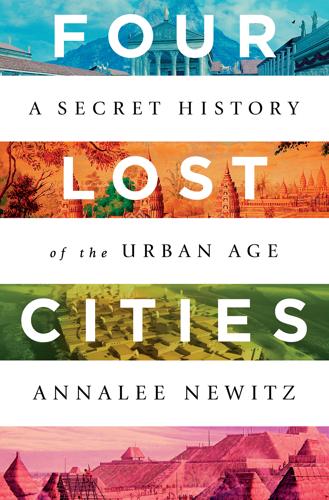
Four Lost Cities: A Secret History of the Urban Age
by
Annalee Newitz
Published 2 Feb 2021
Saskia Sassen, a sociologist who studies modern cities, echoes this sentiment, arguing that cities are places for delightful chance meetings and life-changing random encounters.15 It’s worth considering that Suryavarman’s mania for building city infrastructure may have served a purpose that he couldn’t have understood. The more he induced khñum to expand Angkor’s infrastructure, the more the city became a haven for the laboring classes. Santa Fe Institute network theorist Geoffrey West explores this idea in his book Scale,16 based on his research into today’s fast-growing cities. He’s discovered that urban populations grow faster than their own infrastructure. West has found that doubling the size of, say, a city’s water canals would more than double its population.
…
Monica Smith, Cities: The First 6,000 Years (New York: Viking, 2019). 15. Saskia Sassen, “Global Cities as Today’s Frontiers,” Leuphana Digital School, https://www.youtube.com/watch?v=Iu-p31RkCXI. She also elaborates on these ideas in her book The Global Cities: New York, London, Tokyo (Princeton, NJ: Princeton University Press, 1991). 16. Geoffrey West, Scale: The Universal Laws of Life, Growth, and Death in Organisms, Cities, and Companies (New York: Penguin, 2018). 17. Lustig et al., “Words across Space and Time”; see also Eileen Lustig and Terry Lustig, “New Insights into ‘les interminables listes nominatives des esclaves’ from Numerical Analyses of the Personnel in Angkorian Inscriptions,” Aséanie 31 (2013): 55–83. 18.

50 Future Ideas You Really Need to Know
by
Richard Watson
Published 5 Nov 2013
We’ll start to see more low-carbon building materials, increased investment in energy-efficient public transport, more carbon-neutral cities, locally farmed energy and vertical agriculture—literally tower blocks of urban farms that harvest their own power and water and grow food and animals up to 300m (1,000ft) in the air. The second factor shared by large cities: they act as magnets for human energy. They attract poor people with ambition and put them to productive use, which makes both individuals and cities richer overall. For example, according to Geoffrey West of the Santa Fe Institute (a thinktank), a doubling in size of cities results in a 15 percent reduction in energy use per capita. But for each doubling, urban dwellers also experience an increase in income of around 15 percent. And the more that ambitious individuals move to these areas to secure maximum economic value and become concentrated in small geographic areas, the more people the area attracts.
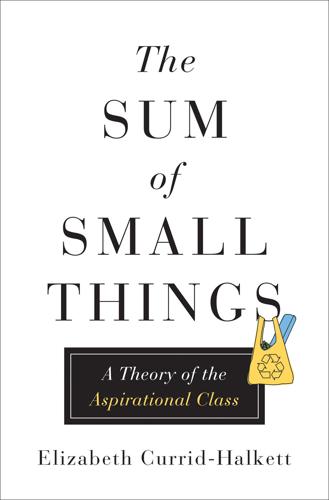
The Sum of Small Things: A Theory of the Aspirational Class
by
Elizabeth Currid-Halkett
Published 14 May 2017
In his famous 1938 essay, Urbanism as a Way of Life, University of Chicago sociologist Louis Wirth set out to define the city through three criteria: size, heterogeneity, and density.31 Many have followed suit: Henri Lefebvre, the French Marxist philosopher, argued that we are experiencing an “urban revolution” (indeed, 82% of the US population and more than half of the world are urban) and that the city needs to be studied as its own field, much like biology or physics. More recently, the Santa Fe Institute physicist, Geoffrey West, has constructed complicated equations and amassed big data to argue that regardless of size, density, or heterogeneity, deep, highly predictable structures uphold the city and urban patterns. West believes we can explain city functions and patterns through equations with 85% accuracy.32 For example, a city’s crime level, amount of waste, number of grocery stores, and so forth can be determined simply by knowing a city’s population size.
…
Both days can be described in four stops, but the lives described are so incredibly different, and the data tell us nothing about these very different experiences of people living in the same city, let alone the millions of other people who also live in a city. These data do not really describe the people who live there and what their lives are actually like. Generalizable patterns of city life are only superficial. Even Geoffrey West himself, after looking at all the models and data, remains puzzled by the ongoing mysteries of cities—why do we put up with them and what makes them so compelling (despite their high rent, cockroaches, and overzealous, cutthroat competition)?34 What’s clear is that cities as a whole are often understood only in broad strokes—those key criteria Wirth outlined some 75 years ago, to which we’ve made small additions in more recent research.

Possible Minds: Twenty-Five Ways of Looking at AI
by
John Brockman
Published 19 Feb 2019
The essays that follow thus constitute a much-needed update from the field. —John Brockman New York, 2019 Chapter 1 WRONG, BUT MORE RELEVANT THAN EVER SETH LLOYD Seth Lloyd is a theoretical physicist at MIT, Nam P. Suh Professor in the Department of Mechanical Engineering, and an external professor at the Santa Fe Institute. I met Seth Lloyd in the late 1980s, when new ways of thinking were everywhere: the importance of biological organizing principles, the computational view of mathematics and physical processes, the emphasis on parallel networks, the importance of nonlinear dynamics, the new understanding of chaos, connectionist ideas, neural networks, and parallel distributive processing.
…
We had a code name for the project: “It’s coming, it’s coming!” But it didn’t come; it went. From that point on I’ve worked with researchers in nearly every variety of AI and complexity, including Rodney Brooks, Hans Moravec, John Archibald Wheeler, Benoit Mandelbrot, John Henry Holland, Danny Hillis, Freeman Dyson, Chris Langton, J. Doyne Farmer, Geoffrey West, Stuart Russell, and Judea Pearl. AN ONGOING DYNAMICAL EMERGENT SYSTEM From the initial meeting in Washington, Connecticut, to the present, I arranged a number of dinners and discussions in London and Cambridge, Massachusetts, as well as a public event at London’s City Hall. Among the attendees were distinguished scientists, science historians, and communications theorists, all of whom have been thinking seriously about AI issues for their entire careers.

Everything Is Obvious: *Once You Know the Answer
by
Duncan J. Watts
Published 28 Mar 2011
Subsequently, I’ve also benefited from visiting appointments at Nuffield College, Oxford, which generously hosted me for a two-month sabbatical in 2007, and the Santa Fe Institute—my intellectual home away from home—where I spent a few weeks per summer in 2008 and 2009. Without these critical breaks from my usual routine, it’s unlikely I would have been able to complete such a long writing project, and I’m grateful to Peter Hedstrom at Nuffield and Geoffrey West and Chris Wood at SFI for their support in arranging these visits. Finally, I’m grateful to a number of people who have helped me realize this book directly.
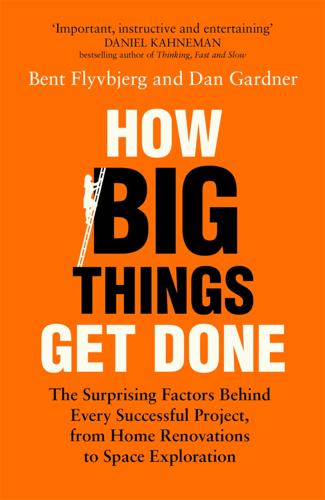
How Big Things Get Done: The Surprising Factors Behind Every Successful Project, From Home Renovations to Space Exploration
by
Bent Flyvbjerg
and
Dan Gardner
Published 16 Feb 2023
International Journal of Urban and Regional Research 32 (4): 768–85. Fallis, Don. 2009. “What Is Lying?” The Journal of Philosophy 106 (1): 29–56. Farago, Jason. 2021. “Gehry’s Quiet Interventions Reshape the Philadelphia Museum.” The New York Times, May 30. Farmer, J. Doyne, and John Geanakoplos. 2008. Power Laws in Economics and Elsewhere. Santa Fe, NM: Santa Fe Institute. Fearnside, Philip M. 1994. “The Canadian Feasibility Study of the Three Gorges Dam Proposed for China’s Yangzi River: A Grave Embarrassment to the Impact Assessment Profession.” Impact Assessment 12 (1): 21–57. Feynman, Richard P. 2007. “Richard P. Feynman’s Minority Report to the Space Shuttle Challenger Inquiry.”
…
Little, Education for All and Multigrade Teaching: Challenges and Opportunities (Dordrecht: Springer, 2007); S. Wal, Education and Child Development (New Delhi: Sarup and Sons, 2006); Flyvbjerg, “Four Ways to Scale Up: Smart, Dumb, Forced, and Fumbled.” 9. James H. Brown and Geoffrey B. West, eds., Scaling in Biology (Oxford, UK: Oxford University Press, 2000); Geoffrey West, Scale: The Universal Laws of Life and Death in Organisms, Cities, and Companies (London: Weidenfeld and Nicolson, 2017); Knut Schmidt-Nielsen, Scaling: Why Is Animal Size So Important? (Cambridge, UK: Cambridge University Press, 1984). 10. Author interview with Mike Green, June 5, 2020. 11.

Aerotropolis
by
John D. Kasarda
and
Greg Lindsay
Published 2 Jan 2009
The note on the real versus ad valorem costs of air transport is taken from David Hum-mels’s “Transportation Costs and International Trade in the Second Era of Globalization” (Journal of Economic Perspectives, 2007). The best introduction to Julian Simon and his heresies is Ed Regis’s “The Doomslayer” (Wired, February 2007), from which the Simon quote is taken. (Simon died a year later.) Researchers at the Santa Fe Institute led by the physicist Geoffrey West have published a number of papers on the metabolism of cities. An introduction to their work is Jonah Lehrer’s “The Living City” (Seed, July 2007). The statistics on oil demand destruction are taken from Jad Mouawad’s “Wondering if Crude Could Fall Even More” (The New York Times, March 9, 2009).
…
Just as con-sciousness is a function of firing synapses rather than raw gray matter, Kasarda believes the key to cracking peak oil and climate change is collaboration, unfettered by space or time. This is counterintuitive, to say the least, but the same effect is already seen in cities. Researchers at the Santa Fe Institute have found that cities grow smarter and faster as they get bigger. “By almost any measure,” they wrote, “the larger the city’s population, the greater the innovation and wealth creation per person.” Their growth becomes “superlinear” as the number of connections between people increases exponentially.

Model Thinker: What You Need to Know to Make Data Work for You
by
Scott E. Page
Published 27 Nov 2018
Through our logical explorations, we improve ourselves and become wise. May we take that wisdom out into the world and help to change it in positive ways. SCOTT E. PAGE is the Leonid Hurwicz Collegiate Professor of Complex Systems, Political Science, and Economics at the University of Michigan and an external faculty member of the Santa Fe Institute. Photo Credit: Cooper Page Notes I have too many colleagues and friends to thank properly. This book was improved by conversations about modeling with Eric Ball, Andrea Jones-Rooy, Michael Mauboussin, Carl Simon, John Miller, Lu Hong, Helene Landemore, Jim Johnson, Skip Lupia, Josh Berke, Patrick Grim, Bob Axelrod, PJ Lamberson, Jessica Steinberg, Jessica Flack, Charlie Doering, Michael Ryall, Robert Deegan, Jay Grusin, Sarah Silvestri, Zev Berger, Ken Kollman, Jean Clipperton, Michael Barr, Benjamin Bly, Elizabeth Bruch, Abbie Jacobs, Mark Newman, Cosma Shalizi, Kent Myers, and Josh Cooper Ramo.
…
In general, we would prefer that we add random shocks rather than multiply them together so as to reduce the likelihood of large events. 6. Power-Law Distributions: Long Tails Every fundamental law has exceptions. But you still need the law or else all you have is observations that don’t make sense. And that’s not science. That’s just taking notes. —Geoffrey West In this chapter, we cover power-law distributions. Often described as long- or heavy-tailed distributions, when graphed these distributions produce a long tail running along the horizontal axis corresponding to large events. The distributions of city populations, species extinctions, the number of links on the World Wide Web, and firm sizes all have long tails, as do the distributions of videos downloaded, books sold, academic citations, war casualties, and floods and earthquakes.
…
His predecessor, 2008 Olympic decathlon gold medalist Brian Clay, had a BMI of 25.8. 11 See Flegal et al. 2012. 12 We assume a mouse 3 inches long, 1 inch high, and 1 inch wide, and an elephant 10 feet tall, 10 feet long, and 5 feet wide. The elephant has a surface area of 400 square feet, or 57,600 square inches. The elephant has a volume of 500 cubic feet, which equals 864,000 cubic inches. 13 Geoffrey West and colleagues have constructed more elaborate and accurate models that predict that metabolism should scale with mass raised to the three-quarters power. See West 2017. 14 Controlled experiments that send identical resumes but change the name demonstrate that women receive lower salary offers and lower evaluations than men (Moss-Racusina et al 2012). 15 The probability of a man becoming CEO equals the probability he receives fifteen promotions in a row, or .
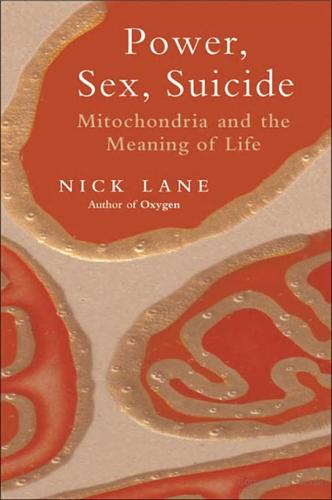
Power, Sex, Suicide: Mitochondria and the Meaning of Life
by
Nick Lane
Published 14 Oct 2005
Then, in 1997, a high-energy particle physicist at Los Alamos National How do we reconcile Max Rubner’s exponent of 2/3 with Max Kleiber’s 3/4? The usual answer is that within species the metabolic rate does indeed vary with 2/3, and the 3/4 exponent only becomes apparent when we compare different species. 1 The Power Laws of Biology 161 Laboratory, Geoffrey West, joined forces with the ecologists James Brown and Brian Enquist, at the University of New Mexico, Albuquerque (through the Santa Fe Institute, an organization that fosters cross-disciplinary collaborations). They came up with a radical explanation based on the fractal geometry of branching supply networks, such as the circulatory system of mammals, the respiratory tubes of insects (the trachea), and the plant vascular system.
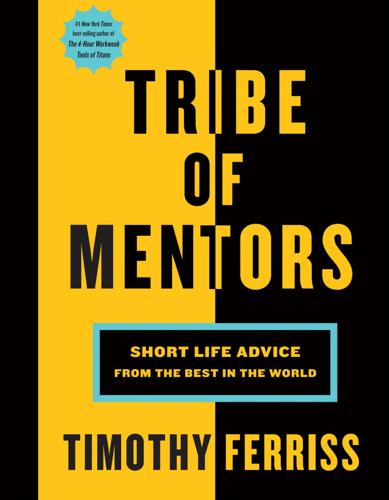
Tribe of Mentors: Short Life Advice From the Best in the World
by
Timothy Ferriss
Published 14 Jun 2017
They think, draw conclusions, make predictions, look for explanations and even do experiments. . . . In fact, scientists are successful precisely because they emulate what children do naturally.” Much of the human brain’s power derives from its massive synaptic interconnectivity. Geoffrey West from the Santa Fe Institute observed that across species, synapses/neuron fanout grows as a power law with brain mass. At the age of two to three years old, children hit their peak with ten times the synapses and two times the energy burn of an adult brain. And it’s all downhill from there. The UCSF Memory and Aging Center has graphed the pace of cognitive decline, and finds the same slope of decline in our 40s as in our 80s.